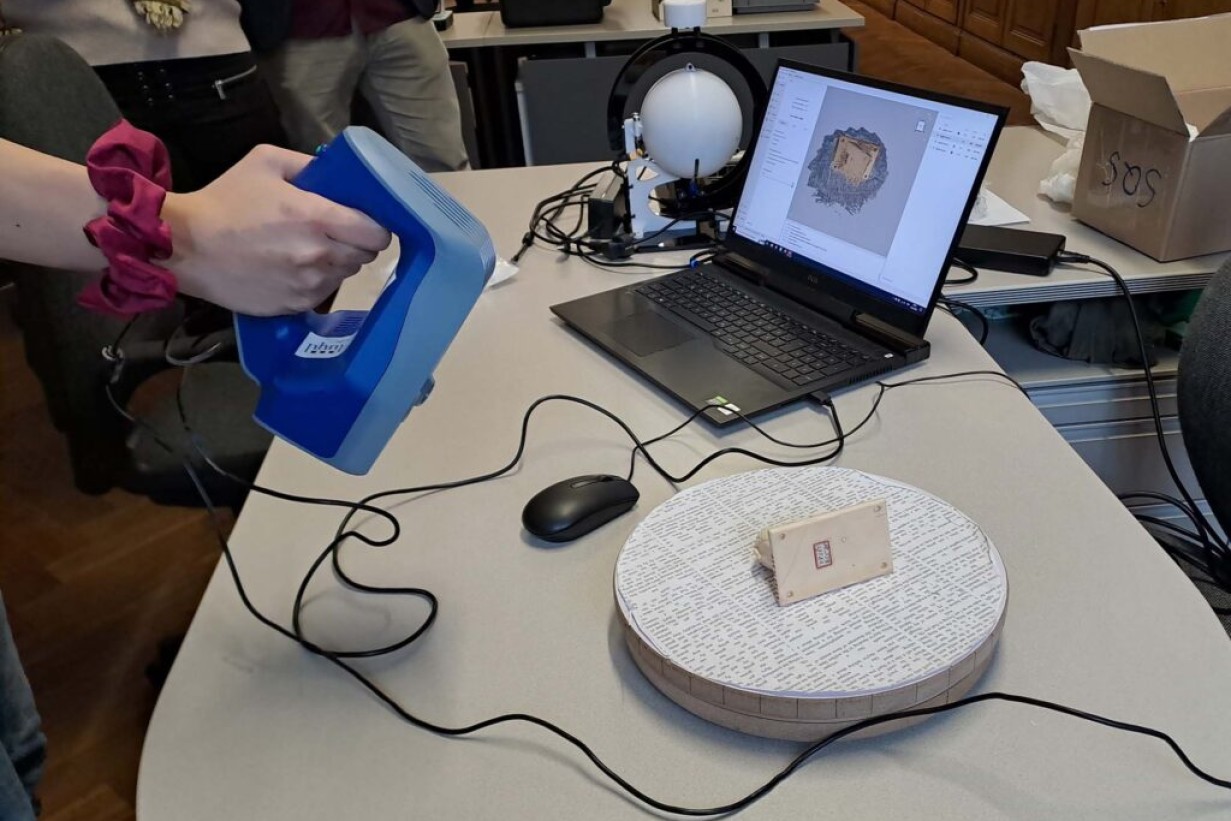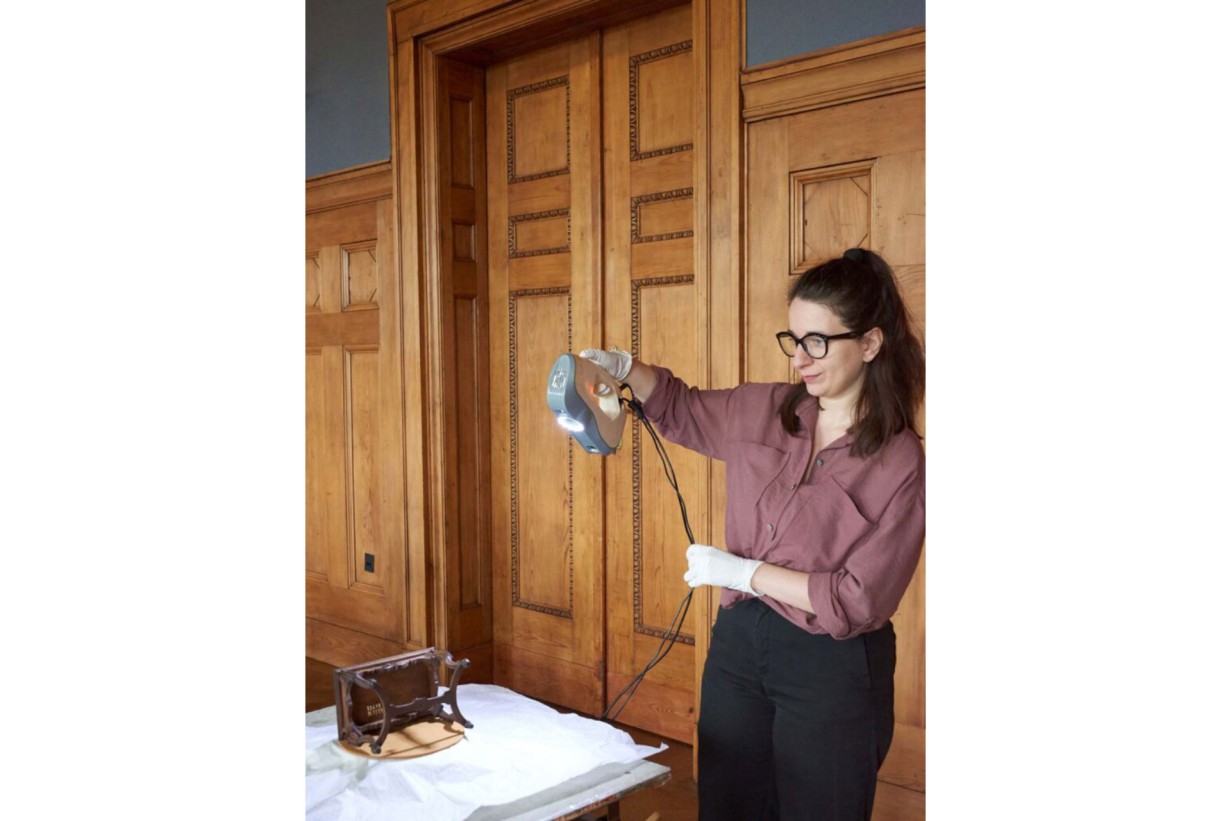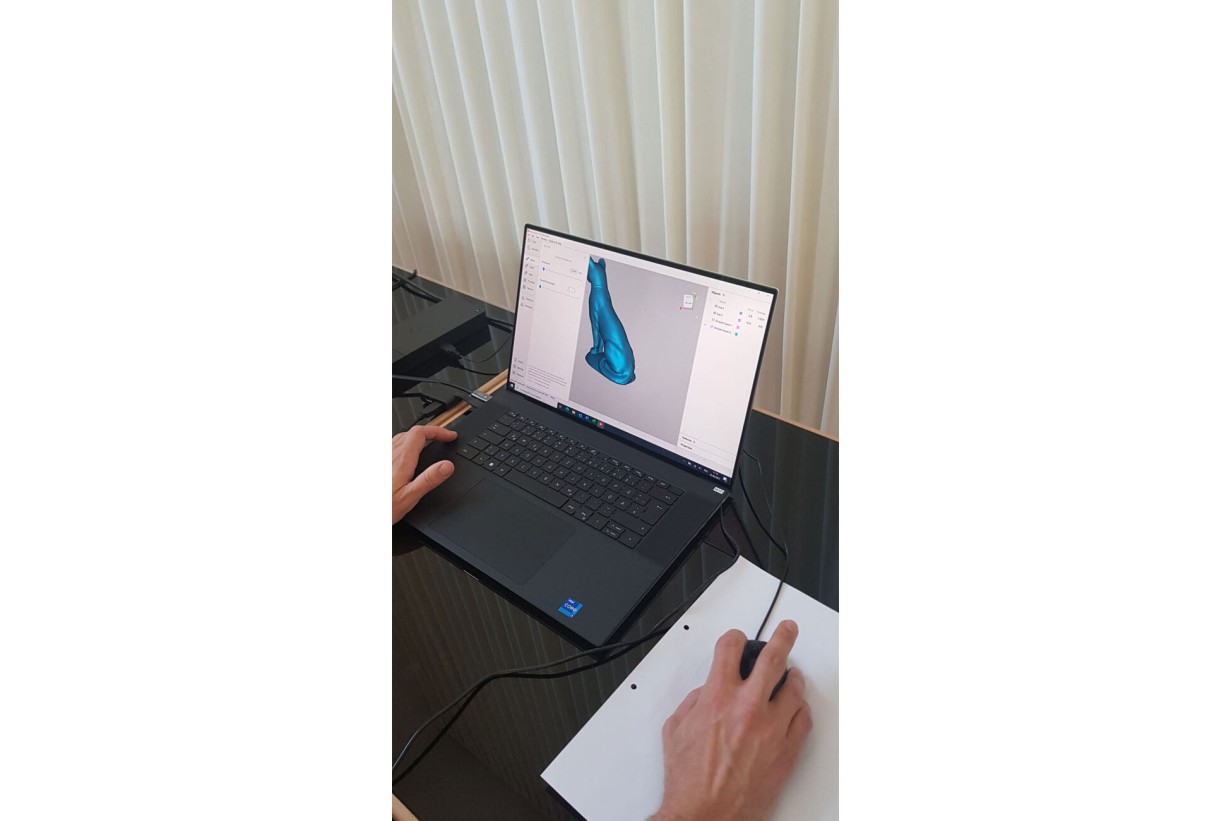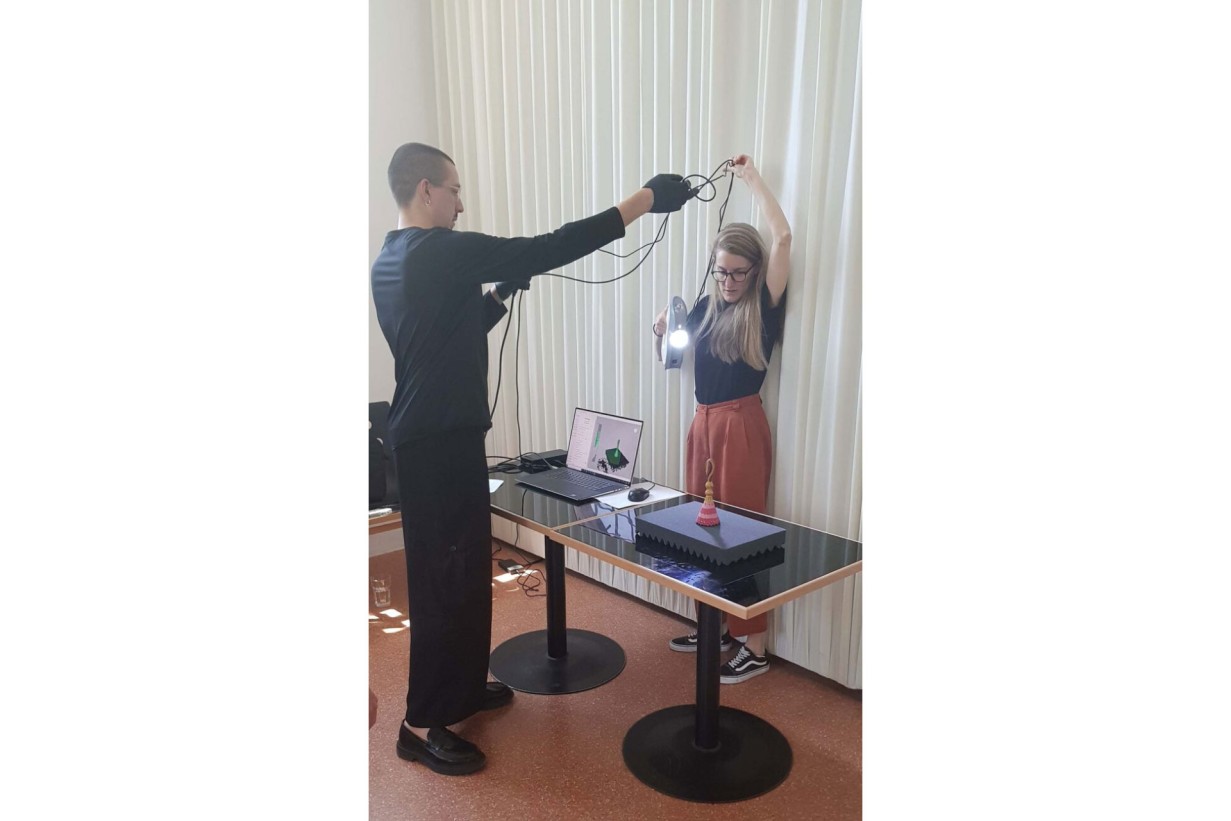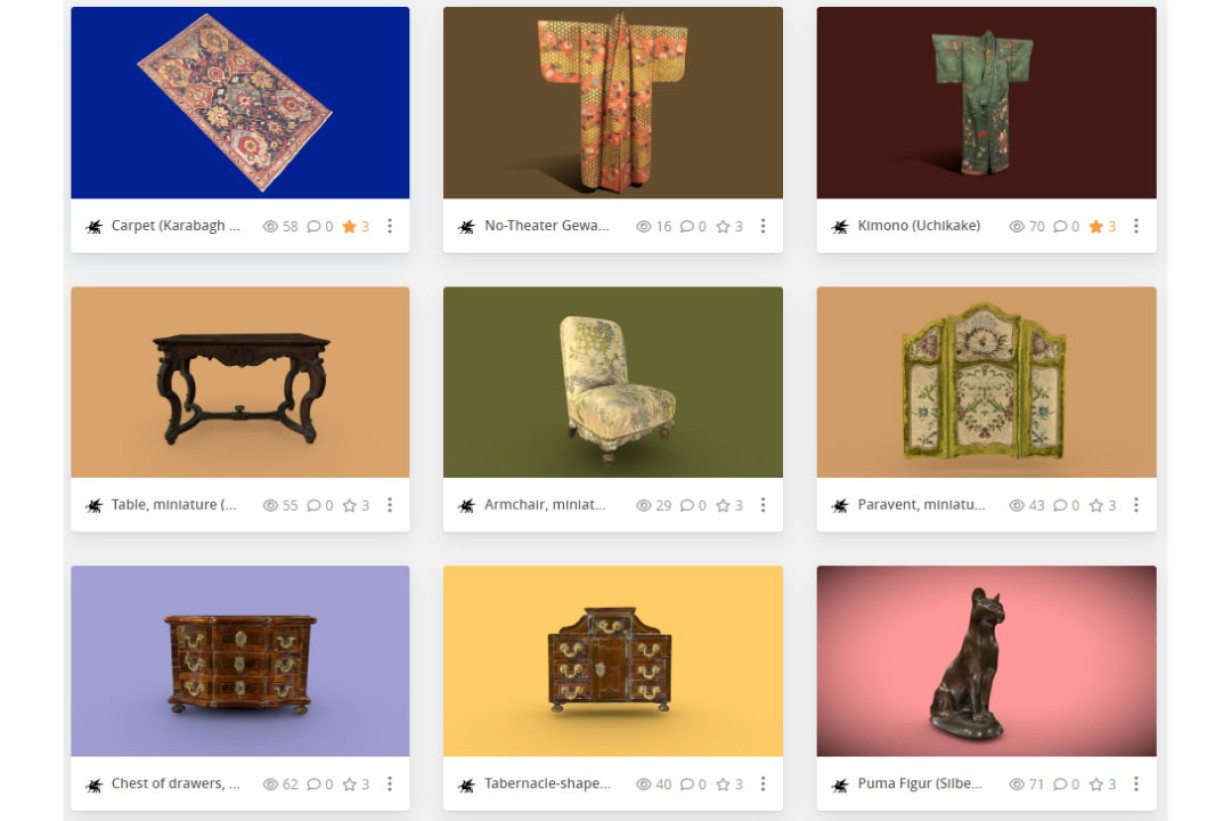The
MAK 3D – Digitization, Data, Display project is sponsored by the Federal Ministry for Arts, Culture, the Civil Service, and Sport as part of its
Digital Cultural Heritage funding program. As a future-oriented museum, the MAK is taking advantage of the Ministry’s sponsorship to improve the digitization, data quality, and presentation, or display, of objects in the MAK Online Collection. The goal is to offer visitors access to a much larger range of objects of even better digital quality.
First of all, existing data were supplemented by incorporating into them already available text, sound, and video material (including item descriptions, media formats, YouTube and Soundcloud content).
A range of fascinating presentations are being created in cooperation with individual permanent collections. In terms of numbers, the biggest of these—directed by Kathrin Pokorny-Nagel, Head of the MAK Library and Works on Paper Collection—focuses on the estate of Anna-Lülja Praun (1906–2004). One of the first women to study architecture in Austria, Praun pioneered her fellow countrywomen’s entry into this field. The architect and designer’s entire estate is located in the MAK Library and Works on Paper Collection. Thanks to the ministry’s funding, in this part of the project alone some 12 000 objects will be recorded and published.
Several aspects of the project involve the MAK Furniture and Woodwork Collection. The inventory of works in plaster has already been completely recorded. The next stage is to process the furniture sketches and the joiners’ guild books. In total, some 550 objects will be published here.
In the Metal Collection and Wiener Werkstätte Archive, the funding has been used to digitize numerous objects recorded on photographic negatives and glass plates from the Hagenauer and Wiener Werkstätte Archives. These are also now stored in the databank.
Contemporary art has played a major role in the MAK since its foundation as the Museum of Art and Industry. Part of the project thus involves creating a number of even more complex digital copies: since May 2023 20 installations and sculptures from the Contemporary Art Collection have been restored and assembled. They are currently being photographed, digitally recorded, and supplemented. The biggest challenges in this area involve reconciling conservational and scientific constraints with photographic requirements—as well as clarifying image copyright issues.
In particular as regards the video archive and contemporary art works collection, clarifying copyright is a prerequisite for establishing whether these new digital assets may even be published as part of the project. In addition, missing image copyrights—even when image material already exists—means that the MAK can publish many data records in the MAK Online Collection only without images. But in order to offer both scholars and interested website visitors greater opportunities for research, the MAK is very concerned to pursue this extremely time-consuming issue of copyright. For this reason, a separate department for establishing image copyright has been created within the project, whose task is to support colleagues involved in copyright issues and thus to increase the image data and audiovisual media being published online.
As part of the project, for the first time objects are being scanned in 3D in the MAK itself, for which purpose the museum has acquired an ARTEC Eva 3D scanner.
3D models serve primarily to document and conserve objects and to present them in a form accessible to all. Most of the objects exhibited in the MAK are three-dimensional, and now they can also be presented as such in digital space. 3D models enable an object to be examined from all sides, using a range of perspectives and zoom factors, without coming into contact with the original. This protects the latter, allowing it to be studied in the comfort of one’s home, and also protects the environment by obviating the need for trips to the museum. Objects can be presented digitally in a number of exhibitions simultaneously, and more people can gain unimpeded access to priceless examples of our cultural heritage. In addition, 3D models can in future serve as templates for 3D prints, for example for use in workshops.
The
Sketchfab platform is an excellent location to follow progress on this aspect of the project. Ten objects a month are currently being added to the platform.
Aside from scans generated in the MAK itself, a number of highlights are being created in cooperation with external organizations. The MAK Textiles and Carpets Collection is one of the most valuable and extensive of its kind. As part of the project, 20 outstanding carpets and to date eight pieces of clothing—the goal is to bring this figure up to 15—that can never or but rarely be exhibited without endangering their fabrics, have been photogrammetrically digitized. These objects will soon be made available to interested members of the public online.
Highlights of the Furniture and Woodwork Collection have also been digitized in 3D, affording visitors insight into unfamiliar aspects of these works. Among the most outstanding items in the collection is a cabinet made in 1776 in Neuwied am Rhein by David Roentgen for the Governor General of the Austrian Netherlands, Prince Charles Alexander of Lorraine—a marvel of German cabinetmaking. The full glory of this unique object with its manifold functions can only be meaningfully communicated by means of an animated 3D model, since it is impossible constantly to operate or demonstrate the full range of the original cabinet’s features without endangering its material substance.
This technique can likewise be used to present a nineteenth-century doll’s house to the public—by creating a 3D model of the object and posting it online.
As part of the digitization process, work has also begun on reconditioning the video archive—from a conservationist standpoint an urgently necessary operation. The archive’s almost 500 films and documentaries, recorded in a range of media, will be digitally secured in-house using the latest open source programs and the data stored in the museum’s communal databank.
Given the current technical resources of the MAK Online Collection, it is not possible adequately to present the full range of digital assets available (videos, 3D models, screen savers, NFTs, etc.). Presenting these new digital assets is thus contingent on making improvements in this area. A new viewer will allow the entire spectrum of formats to be properly presented, and through Artificial Intelligence the MAK Online Collection will be transformed into a digital space in which to “stroll and linger” among its deservedly highlighted treasures.
All these measures are aimed at broadening the MAK’s range of offerings and, in line with its educational mandate, at further augmenting its research assets for the benefit of current and future visitors.
MAK on Sketchfab

